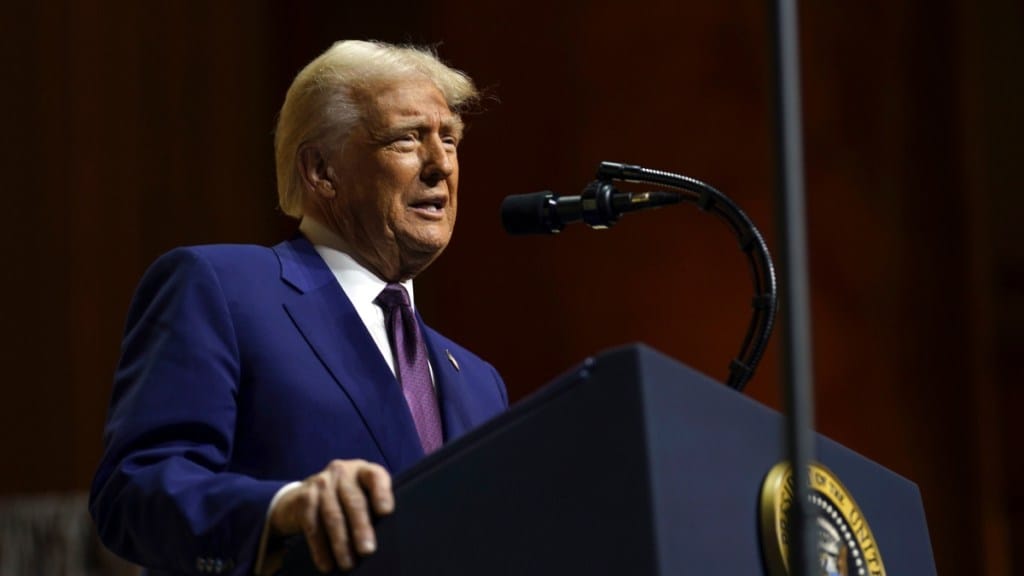President Donald Trump announced plans to impose tariffs on Canada and Mexico starting Tuesday, while also doubling the 10% universal tariff on imports from China. In a post on Truth Social on Thursday, Trump cited the smuggling of illicit drugs, including fentanyl, into the U.S. at “unacceptable levels” as justification for the tariffs, arguing that increased import taxes would pressure other nations to crack down on trafficking.
“We cannot allow this scourge to continue harming the USA,” Trump wrote. “Until it stops or is significantly reduced, the proposed TARIFFS scheduled to take effect on MARCH FOURTH will proceed as planned. China will also face an additional 10% tariff on that date.”
The announcement has already unsettled global markets, raising concerns about inflation and potential damage to industries such as auto manufacturing if tariffs are imposed on America’s top trading partners. However, Trump has previously used aggressive trade threats before granting last-minute exemptions, including a 30-day delay of the Canada and Mexico tariffs initially set for February.
Trump’s plan includes a 25% tariff on imports from Canada and Mexico, with a reduced 10% tax on Canadian energy products such as oil and electricity. Both countries responded by emphasizing their existing measures to curb drug trafficking, with Canada appointing a fentanyl czar and Mexico deploying 10,000 National Guard troops along its border with the U.S.
10% tax on Chinese imports
In addition to the North American tariffs, Trump also confirmed a 10% tax on Chinese imports linked to chemicals used in fentanyl production, which will now be doubled. The move comes as part of his broader push for sweeping tariffs, including a planned “reciprocal tariff” system set to begin on April 2, aiming to match the taxes that other countries impose on American goods.
“The April Second Reciprocal Tariff date will remain in full force and effect,” Trump stated in his post.
25% tariff on European countries
The president also signaled plans for a 25% tariff on European countries and separate tariffs on autos, computer chips, and pharmaceuticals. Additionally, he intends to remove exemptions on his 2018 steel and aluminum tariffs while introducing taxes on copper imports.
With the possibility of a wider trade conflict, consumer confidence has taken a hit. The Conference Board reported a sharp decline in its consumer confidence index, which fell by seven points to 98.3 in February—the largest drop since August 2021. Inflation expectations for the next 12 months also rose from 5.2% to 6%.
“There was a sharp increase in the mentions of trade and tariffs, back to a level unseen since 2019,” said Stephanie Guichard, a senior economist at the Conference Board. “Notably, comments on the current administration and its policies dominated the responses.”
Financial markets have also reacted negatively, with the S&P 500 declining over the past month, reversing gains made after Trump’s November election victory. While investors initially anticipated tax cuts and deregulation under Trump’s leadership, concerns over escalating trade tensions have begun to weigh on market sentiment.
With inputs from Reuters

